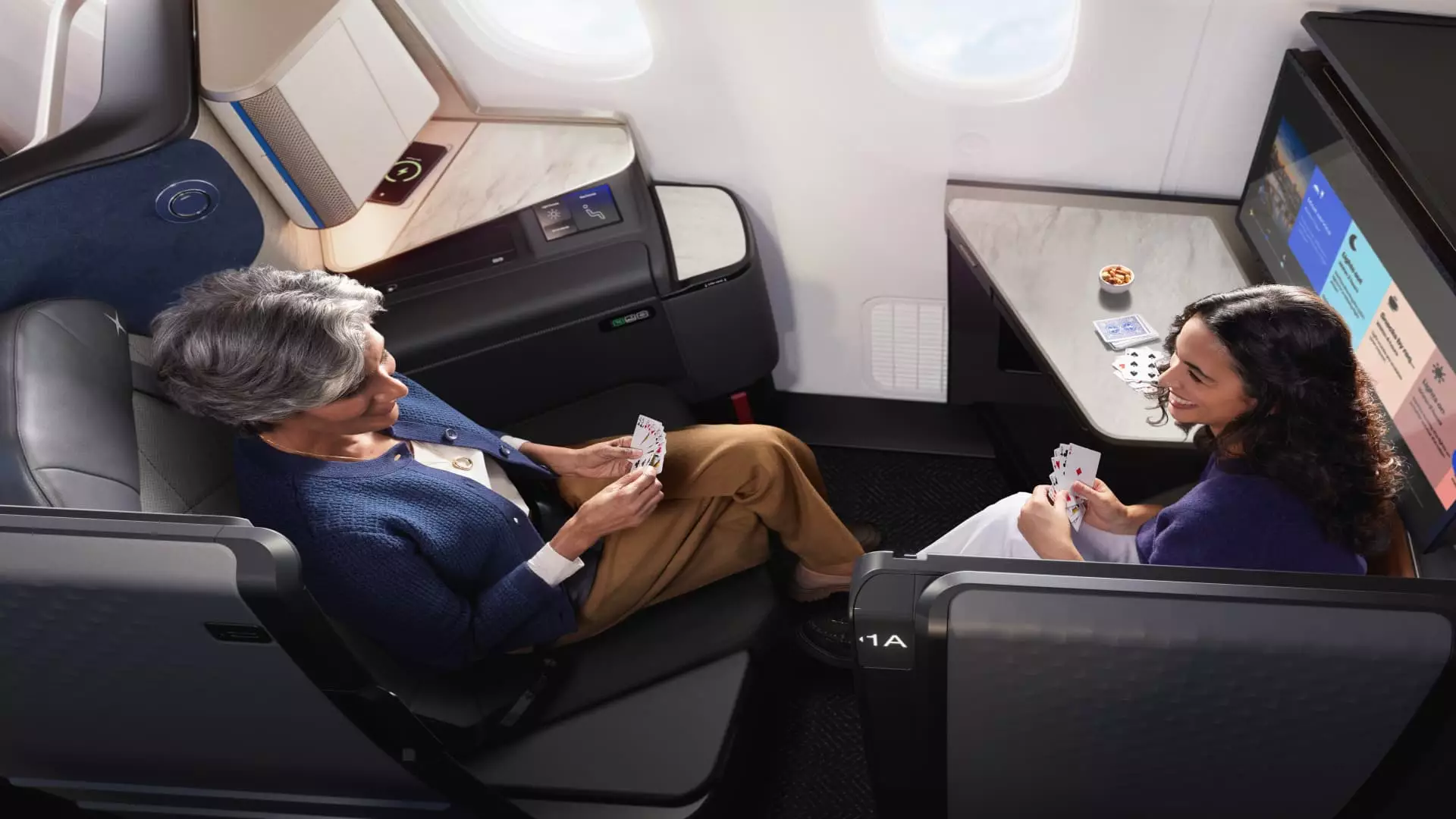In a world where airline travel often evokes memories of cramped seats and mediocre service, U.S. airlines are attempting to elevate the flying experience. The stakes have never been higher as American Airlines, United Airlines, and others engage in a fierce competition to win over international business class travelers. With lavish amenities that include sliding doors on suites, noise-canceling Bang & Olufsen headphones, and gourmet meal options, these airlines are vying for customers who are willing to splurge on enhanced comfort and services. As the disparity between economy and business class widens, it begs the question: Are airlines truly enhancing the travel experience, or are they simply capitalizing on the frustrations embedded in economy class?
Rethinking Luxury: From First-Class Remnants to Elevated Business Class
While airlines continuously make pivots to attract high-paying clientele, they find themselves in a somewhat paradoxical situation. The business class experience has been dramatically upgraded over the years, leading many travelers to question the need for traditional first-class service. As American Airlines prepares to roll out its new 787-9P business-class suites, replete with trinket trays and wireless charging pads, it becomes evident that airlines are focusing their efforts on creating luxurious business class experiences rather than perpetuating the now-almost-obsolete concept of first class. The reality is that businesses often prohibit the purchase of first-class tickets due to cost restrictions, while their policies may allow employees to fly business class. Thus, by investing in luxurious business offerings, airlines can profit from corporate customers who want to give their employees a taste of comfort while adhering to budgetary constraints.
The Premium Experience: More Than Just Seat Space
American Airlines boasts that its upgraded suites offer a 42% increase in living space, a statement echoed in the features being introduced by United Airlines, which is presenting its new “Polaris Studio” seats that include a visitor ottoman and larger 27-inch screens. The distinctions may appear trivial at first glance, but they belong to a calculated strategy to win over discerning business travelers who expect more than just a seat on a plane. Airlines are responding to a reality: the industry is not just selling the ability to fly from point A to point B; it’s selling an experience. This meticulous focus on crafting a premium experience isn’t merely about luxurious seats and gourmet meals; it’s about creating an environment tailored to the needs and expectations of top-tier travelers.
Marketing vs. Reality: Examining True Value
Despite the glitzy features, a pressing concern lingers: the perceived value of these upgraded experiences. When comparing ticket prices between economy and these new luxurious options, the gulf is staggering. For instance, American Airlines is charging almost $5,747 for a business-class round trip from Philadelphia to London, while a standard coach ticket costs only $867. The question becomes whether the perceived quality justifies this price difference. Airline executives, including Robert Mann from aviation consultancy R.W. Mann & Co., have argued that as economy class experiences degrade, the demand for enhanced options has surged. Yet, as airlines hike prices to provide these plush offerings, will they alienate a significant segment of consumers who find value in basic service?
The Influence of Economic Concerns on Luxury Travel
While airlines remain optimistic despite signs of an economic downturn, there are whispers that the premium demand from consumers could be unsustainable. The promise of a superior experience may not be enough to entice travelers if sentiment shifts towards budgeting. Higher-tier travelers tend to be more resilient, and air travel remains appealing to those who have the means. Still, the uncertainty in global markets reminds us that putting all chips on luxury could come back to haunt these carriers. Airlines must find the delicate balance between investing in high-end offerings and ensuring that these investments do not result in lost profits when economic conditions worsen.
Comparing Global Offerings: The Race for Top Tier
While U.S. airlines are determined to enhance their business-class standing, there’s a prevailing discussion about how they stack up globally. Notably, Emirates and other international carriers continue to provide opulent amenities such as onboard showers and unlimited caviar service. In the pursuit of consumer loyalty, American and United may be presenting attractive business class products, but are they genuine contenders when juxtaposed against the luxuries offered by their international counterparts? As the demand for elevated service flourishes, airlines need to keep an eagle eye on global strategies to ensure they aren’t left in the dust when it comes to offering unrivaled luxury.
U.S. airlines are undoubtedly reimagining the business-class experience, but as they engage in this fierce competition, they must tread carefully amidst fluctuating economic climates and evolving consumer expectations. Whether they’re truly improving the journey or merely taking advantage of expectations to maximize profit is a question worth pondering.

